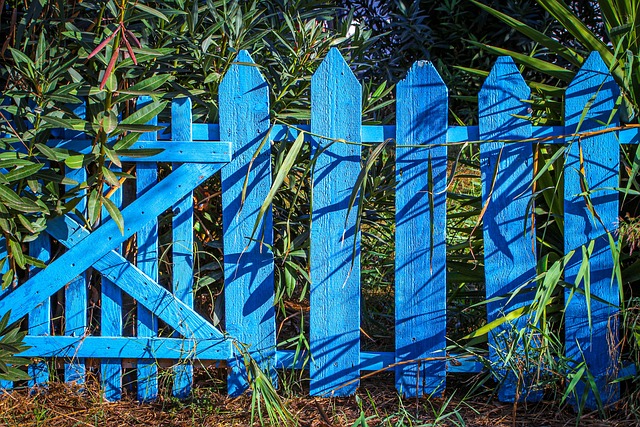In coastal regions, where harsh weather conditions prevail, selecting the right fencing material is paramount. This article explores the benefits of durable wooden fencing as a robust and aesthetically pleasing solution for your coastal property. We delve into the unique challenges of coastal fencing, highlighting why certain wood species excel in these environments. Additionally, we provide practical installation and maintenance guidance to ensure longevity, while also showcasing how wooden fences can enhance the scenic beauty of your seaside sanctuary.
- Understanding Coastal Fencing Challenges
- Benefits of Durable Wooden Fencing
- Choosing the Right Wood Species
- Installation and Maintenance Tips
- Enhancing Coastal Aesthetics with Wooden Fences
Understanding Coastal Fencing Challenges
Coastal areas present unique challenges when it comes to fencing due to their harsh, often unpredictable environments. One of the primary concerns is moisture and salt corrosion, which can significantly accelerate the deterioration of traditional fence materials like wood. The constant exposure to saltwater and high humidity levels make maintaining a sturdy fence difficult, leading to frequent repairs or replacements. Additionally, strong winds and storms common in coastal regions exert tremendous force on fences, demanding robust construction to withstand these extreme conditions.
Another challenge is the need for aesthetically pleasing barriers that complement the natural surroundings. Many coastal communities have strict guidelines regarding fencing to preserve the scenic beauty of beaches and waterfronts. Durable wooden fencing should not only be able to resist corrosion but also align with local aesthetic preferences, often featuring natural finishes or specific design elements that integrate seamlessly with the coastal landscape.
Benefits of Durable Wooden Fencing
Durable wooden fencing offers an array of benefits for coastal areas, where traditional materials may falter due to harsh weather conditions and salt air. Firstly, wood is a naturally attractive material that can enhance the aesthetic appeal of any property. Its versatility allows for a wide range of styles, from traditional picket fences to elegant post-and-rail designs, catering to various architectural tastes.
Moreover, durable wooden fencing provides excellent privacy and security. The dense nature of high-quality wood makes it difficult for intruders to penetrate, offering peace of mind for homeowners. Additionally, these fences are relatively low-maintenance compared to other materials, requiring only occasional cleaning and a simple re-stain every few years to preserve their beauty and longevity.
Choosing the Right Wood Species
When selecting wood for coastal fencing, choosing the right species is paramount to ensure durability and longevity. Different woods have varying levels of resistance to salt water, moisture, and extreme weather conditions characteristic of coastal regions. For instance, cedar and redwood are renowned for their natural resistance to decay and insects, making them ideal choices for outdoor applications. These softwoods possess inherent oils that act as a natural barrier against moisture and UV radiation.
Consider also exotic hardwoods like ipe or teak, which offer exceptional durability and beauty. While they may be more expensive, these woods can withstand the harshest coastal environments without compromising strength or aesthetics. Their dense structure and high oil content provide excellent resistance to rot, making them suitable for long-lasting fences that can enhance the curb appeal of any property along the coast.
Installation and Maintenance Tips
When installing durable wooden fencing in coastal areas, it’s crucial to ensure proper drainage to prevent water damage. Digging a slightly sloped trench and fitting the fence posts with metal plates or brackets that allow for movement will help alleviate pressure from shifting sands or tides. Use high-quality, pressure-treated wood designed for exterior applications to enhance longevity against salt air corrosion. Regular cleaning with mild soap and water can remove salt residue buildup that may compromise the barrier’s integrity.
Maintenance involves occasional painting or sealing to protect the wood from UV rays and moisture. Check posts and rails regularly for signs of rot, warping, or loosening, replacing as needed. Keep the area around the fence clear of debris and overhanging branches to prevent damage from wind or falling objects. Seasonal inspections can help catch potential issues early, ensuring your coastal fencing remains sturdy and secure for years to come.
Enhancing Coastal Aesthetics with Wooden Fences
Wooden fences have long been a beloved feature along coastal areas, offering not just functional benefits but also a chance to enhance natural beauty. The rustic charm of well-crafted wooden barriers blends seamlessly with the surrounding landscape, creating a picturesque setting that is both inviting and harmonious. In many coastal communities, these fences become iconic landmarks, adding character to beaches, boardwalks, and residential neighborhoods.
The aesthetic appeal of durable wooden fencing goes beyond its natural appeal. Skilled artisans can carve intricate designs into the wood, featuring motifs inspired by marine life or local flora, further enriching the coastal tapestry. This artistic touch not only adds visual interest but also showcases the skill and creativity of the craftsman, making each fence a unique piece that contributes to the area’s overall allure.
